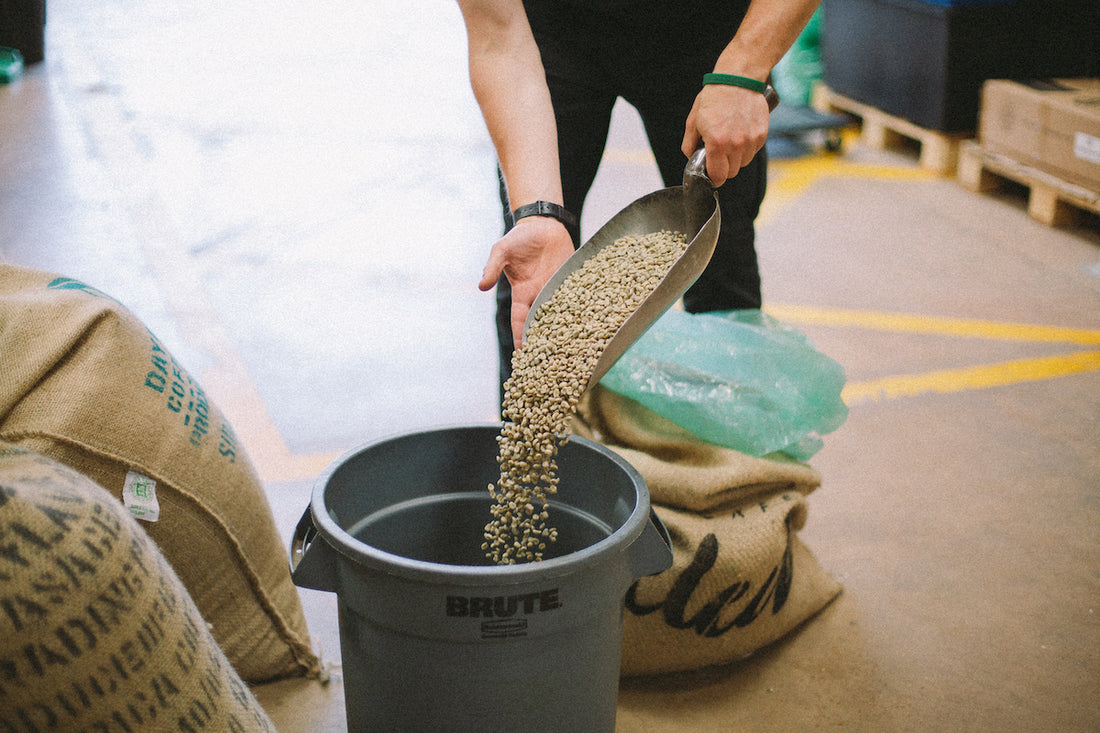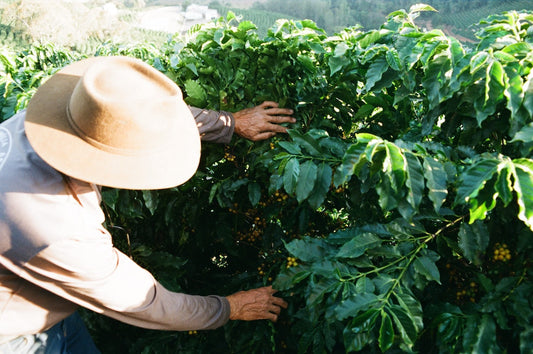
Give blends a chance
Imagine taking great cake ingredients and eating them individually. Flour, eggs and butter on their own. Absolutely not. Are you mad? But mix all of the ingredients up and bake it in an oven and it becomes something not many of us can resist a slice of. It may be a tenuous link, but we feel the same about blending coffee. Yep, we’re going there. Blending gets a bad rap sometimes partly because historically blending was used to homogenise and hide bad characteristics of cheap coffees. For us, blending is about taking favourable attributes of exceptional coffees and combining them so that it becomes more than the sum of its parts.
If you think of any mass market brand of food you love; Heinz ketchup, Cadbury’s chocolate, Coca Cola, they all have a certain recipe and resulting taste which their brand is built upon. It’s really hard to create ownership of a recipe and flavour for a single-origin coffee. It’s a seasonal crop and it will change every year.
If you look at the classic Italian brands like Lavazza or Illy, they have been able to build their business of a certain recipe and flavour by clever blending. Their coffee is always the same – season to season, year after year. It’s that signature flavour that makes the customer think “aaah there’s my trusty, burnt Italian coffee I so love”!
Third wave coffee saw the emergence of micro roasters and speciality coffee becoming more widely available. Part of this movement was the idea that exceptional coffees should be enjoyed and celebrated in their own right, without adulteration. The Third Wave coffee movement shed the old fashioned shackles of blended coffee to focus on the intrinsic qualities of single-origin coffees. However, as the market has matured and developed we now understand that speciality coffee can be blended and still be good, and still be celebrated.
So when is a blend appropriate? Well, one good example is for house espresso coffees. When brewing espresso in a high-volume commercial environment you need a coffee that has a fairly wide “sweet spot” (that is the breadth of brewing parameters that allow the coffee to taste good), and be able to handle 10 oz of milk for a big latte. Milk can drown out certain characteristics in a coffee and accentuate others. Some single-origin coffees can either taste too weak or too acidic, or can just literally die with milk. There are single-origin coffees that can do all of the above, but if you combine the favourable attributes of, say, two coffees, this will be easier to achieve.
As an example, our house blend “The Truth” is a perfect example of this. We use a Brazialian coffee which is very low in acidity, but brings loads of chocolate and nut character with a syrupy mouthfeel. We combine this (in equal parts) with a Colombian coffee which is sweet, far more zingy and has some lovely fresh fruit notes. When you combine these two coffees a kind of alchemy takes place and the resulting coffee has characteristics that a single-origin coffee can’t achieve.
Don’t get us wrong, we love single-origin coffees, but next time you’re about to turn your nose up to a blend, give it a go! You never know, you might be pleasantly surprised.




